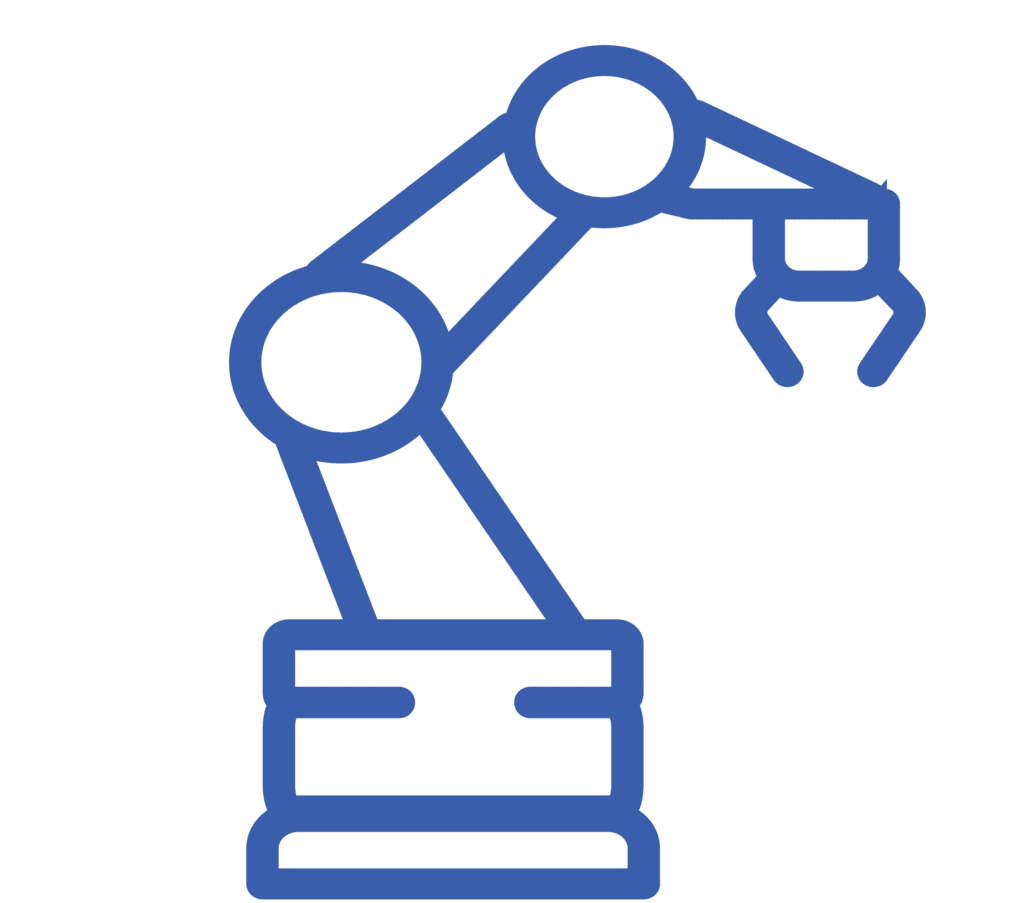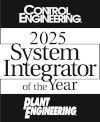Control Systems Upgrade Maximizes Efficiency for Dessert Packaging Line
Challenge
In the fast-paced world of food manufacturing, efficiency and precision are paramount for maintaining a competitive edge. When a major player in the food industry wanted to upgrade their packaging controls for flan and pudding products, they turned to the trusted engineering team at E Tech Group. The packaging process required precise control and synchronization to maintain product quality and optimize packaging speed. However, the client’s outdated controls system hindered their ability to meet growing production demands. The challenge was to develop an efficient controls solution that could be executed within a tight one-weekend timeframe and with minimal downtime. The project encompassed addressing outdated PLC and HMI systems, aging control panel hardware, and the need for improved networking communications.
Solution
Recognizing the tight project timeline, E Tech Group leveraged their expertise to create the best solution. Through planning and collaboration, they formulated a comprehensive approach that began with a thorough evaluation of the existing control panel and its components, and identified which areas required improvement and retrofitting. E Tech Group consulted with trusted vendors to assist in the retrofitting process for servo drives, motors, and gear boxes, and strategized the most effective approach to implement the necessary program changes. Once these enhancements were identified and received, the project team utilized a planned shutdown period to validate the functionality of the retrofitted products.
Over the course of the weekend, E Tech Group put the project plan into action. The team disassembled the customer’s control panels and installed new components, migrated existing PLC code to the new controllers, and converted the customer’s existing HMI screens to a new PanelView HMI application. They utilized Studio 5000 for retrofitting PLC programs, FactoryTalk View software to make required alterations to the customer’s HMI programs, in addition to command line programing to support network segregation for the new Stratix 5700s.
Results
The controls upgrade was achieved swiftly and effectively, all thanks to the unwavering dedication and collaborative efforts of E Tech Group’s engineering team. The customer experienced minimal interruptions and downtime, enabling enhanced production and operational efficiency. The upgraded PLC and HMI systems brought improved functionality, while the new control panel hardware simplified system maintenance and reduced costs. Furthermore, the enhanced networking communications facilitated seamless data transfer and real-time monitoring, empowering the client to make informed decisions and uncover possibilities for further optimization. E Tech Group’s collaboration, expertise, and determination to overcome project challenges demonstrates their commitment to customer satisfaction and their ability to deliver successful project outcomes under time-sensitive circumstances, solidifying their reputation as one of America’s fastest-growing system integrators.

Implementing Robotic Automation for a Food Production Client
E Tech Group was able to automate a once completely manual process for a food manufacturing facility that was struggling with employee retention and meeting output demand due to physically demanding and environmental factors.
The Project: Help a Client Circumvent Labor Shortages with Robotics Automation
A food manufacturing facility located in Greenville, SC was experiencing bouts of labor shortages, extremely high turnover and retention, workplace injuries, and impacted output that could all be traced back to the packaging and palletization area in their facility. This physically-demanding manual process was starting to threaten the company’s operations and employee safety.
Before reaching out to E Tech Group, this palletizing process was one-hundred percent manual. There were fourteen full-time employees that were able to pack and palletize enough product to produce 1.5-2 truckloads for shipment per day. Unfortunately, there were a number of contributing factors that were severely limiting the desired output.
The Challenges: Complications Inside & Outside the Facility
Because this facility was located in a warmer climate, temperatures could reach over one-hundred degrees in the hotter months. This, coupled with the facility being dedicated to food and beverage production, the workers on the floor couldn’t have beverages of any kind outside of their allocated breaks throughout the day. This could make it difficult to remain hydrated and contribute to work-related incidents.
There were often too many employees attempting to navigate narrow walkways in increasingly-crowded spaces, adding to the already hot temperatures and exacerbating the possibility of potential injury. In some cases, not just a possibility, but numerous violations and lax regulations allowed sub-par pallets to be handled and used in their palletization and shipping process, leading to 40% of the recordable OSHA incidents coming solely from this area.
On top of all this, it was brought to our attention that the majority of individuals working in this area were contracted by a temp agency and would often only last a week, and on certain occasions, just until lunch. It was clear to our team that all of the aforementioned conditional issues were heavily influencing the incredibly high turnover this facility was experiencing, even before COVID, and continued to only get higher during.
The environmental and physical working conditions were enough to truly drive the need for automation in an area that really wasn’t optimized for human labor. Implementing robotic processes and an integrated control system would allow personnel to deal with palletizing from the safety of an HMI instead of dealing with a taxing, risky and inconsistent physical process.
The Process: Environmental Factors & Available Capital Push for a Creative Solution
Understanding that this facility had a number of issues impacting retention and consistency in their workforce, and the ultimate goal being to automate those positions not suited for human labor, the applied solution would need to be designed taking into consideration the limited resources available to monitor and maintain this installation. This would allow the client to reallocate and retrain existing skilled labor to fill new positions without the need to rely on temp agencies for additional workers.
Second to available manpower, the limited physical space continued to plague the design team. Knowing this already overcrowded space was susceptible to frequent workplace injuries, they would be forced to think outside of the box when positioning the equipment for an automation solution that would be erected in an area not conducive to added equipment.
Not only was accommodating the lack of real estate a large undertaking, but addressing the dated infrastructure quickly moved to the top of the list. Realizing that any installed solution would require new and dedicated power to ensure reliability, it added a slightly complex layer to an already intricate project.
The last and perhaps most critical challenge to address and overcome was stakeholder approval. Understanding this facility had been facing an output deficit impacting their profitability, getting them to spend more money was no easy task. Our team provided several iterations of the proposed solution, but it proved to be an exercise in futility.
The Solution: Strategic Segmentation Provides a Budget-Friendly Design
After all proposed solutions were rejected by the decision makers due to budgetary constraints, our team decided to position a phased approach. This would allow them to spread the large investment required to help realize their business goals across a number of installations. Satisfied with the first and second phase and proposed cost, the E Tech Group team began to execute!
PHASE 1: Planning
Design a comprehensive automation solution that maximized use of space and minimized need for worker traffic.
PHASE 2: Application
Procure the necessary automated equipment, build the robotics control system, program, install, commission, and train employees on the new system.
Major Equipment:
- Palletizing cells, safety fence and scanner system
- Pallet conveyor
- Pallet dispenser
- Pallet wrapper
- AGV system with stacked dual conveyor cart
- Case conveyor
- Mezzanine in filler room
- Safety gate for existing mezzanine
Electrical Equipment:
- PLC control panel
- Case conveyor
- 800A bucket for MCC
- 480VAC power distribution panels
- Case conveyor motor disconnects
- Distributed I/O sensors/solenoids/brackets
- Pallet conveyor VFD panel
- Pallet motor disconnects/brackets
- HMI
Once the initial challenge of running dedicated power for this control system installation was complete, these combined and installed components created a fully-automated solution that drops a box from an elevated mezzanine to a fill area below, shakes to level and then moves the full box through a taping station as it heads down a conveyor, where it is then diverted to the correct palletizing area.
A palletizing robot picks and places the sealed box in its designated spot on the pallet, and once full is secured by a pallet wrapper. When the pallet is ready to move to the shipping area, an AGV removes the full pallet, then adds more empty pallets to hopper that will repeat this process.
By automating the client’s palletizing processes in this way, E Tech Group helped them remedy the multivariable dilemma that this manual process caused the company – namely, high turnover, an unsafe environment, and the output limitations symptomatic of the first two.
PHASE 3: Future Work
Add automated case erectors on mezzanine to automatically provide empty cases.
The Results: Tangible Results on an Immediate Scale
The benefits this custom automation system provides this client made the challenges we encountered throughout the project worth it. The roboticized pallet system bore several positive results:
Decreased Safety Incidents and Increased Production
Our E Tech Group team took this from a completely manual process to an automated one. This facility redeployed two-thirds of their twelve full-time employees from this area to other areas in need, helping eliminate overcrowding and decrease the number of safety-related incidents. This left only three employees to monitor this new system which almost doubled the production and output rate; from 1.5-2 to 2.5-3 truckloads per day.
Long-Term ROI Considerations
The implementation of a solution designed to automate a once manual process, replacing 12 manual labor positions, has exponential ROI potential. When positioning this solution, it was critical to understand the facility’s challenges and goals. E Tech Group believes the continued completion of the next phases will only compound the ROI considerations first identified when taking on this project.
Reduction in Accidents/Lost Time Accidents
The new automation system anticipated a reduction of as much as 40% of the OSHA recordable incidents that occur in and around pallet handling. This, in turn, improved their safety record, reducing claim impact and insurance premiums, as well as lost time resulting from work-related incidents.
Reduced Administrative Burden for Labor Acquisition
Automating the palletizing process enabled the management team to increase efficiency, as they would no longer be tasked with perpetual recruiting, onboarding, supervision and scheduling of a constantly-changing labor pool. This allowed these departments to be more effective, adding even more return to the facility.
Ability to Accommodate Future Capacity Increases
These phased upgrades will allow for easier future optimization, increasing throughput and allowing the client to stay competitive.
Risk Mitigation/Predictability
Because the human being represents a fairly uncontrollable variable, susceptible to injury, illness or unpredictability, the transition to automation largely eliminates those risks. The client would now be able to more accurately predict and complete throughput benchmarks; ensuring order consistency and packaging quality.
Competitive Advantage/Enterprise Value
While automation provides an increased level of predictability to the business, it also provides the image of a state-of-the-art industry leader to a prospective customer or buyer that is visiting several potential vendors. Setting yourself apart as a company that continues to invest in their business can be invaluable. In all, this complete manual-to-robotics switch helped the client in several ways. While it was challenging to design and implement a cutting-edge system in an outdated and cramped facility, the benefits outweighed the cost immediately, and will continue to offer the client long-term returns. And E Tech Group will be there to support their automation endeavors every step of the way.

Updating Label Detection System for Automated Beverage Production
Quality assurance issues were plaguing a bottling facility, as their current label detection system wasn’t catching missing or misapplied labels. E Tech Group was able to integrate three systems into one, allowing for more accurate detection and less missed bottles.
The Project: Remedy the Output Bottleneck Caused by Missed Bottles
An internationally-distributed beverage production company wanted to upgrade their facility’s inspection station to check for missing body, back and neck labels on their bottles before shipping. Quality control was a growing concern and ensuring consistency in each shipment was a must.
Their current label inspecting system wasn’t meeting expectations; imperfectly applied or missing labels were making their way through. This cost the client in time, waste and slowed-output, not to mention threatened consistency assurance in their packaging.
The Challenge: Integrating Three Systems into One on a Tight Timeline
Our team started with a site visit to walk through the customer’s existing control system solution, helping them better understand current challenges and working to define the desired end result and deliverables.
This exploratory review would uncover that we would not be implementing a single system, as was originally outlined in the proposal, but the integration of a new system while simultaneously supplementing the existing system and upgrading the PLC to tie everything together.
The rigid production schedule standard in food and beverage automation would only allow for two days of downtime, each only 12 hours. This required all panels and hardware to be prefabricated before installation and perfect execution on a very truncated timetable.
The numerous moving pieces would dictate the need for strict project management, frequent and open communication, and detailed documentation for any changes in schedule or equipment that might happen throughout the project. Without effective coordination between our automation team and the client, implementation of the new control systems could end up problematic.
The Solution: Build a Robust, Integrated Label Detection System
Coordination between teams translated to coordination between automation products as we pivoted from the original plan of single-system implementation. Instead, we brought together the existing Allen Bradley PLC (existing main panel), repurposed the Teledyne Taptone system that wasn’t providing the results they would like, and integrated the new Keyence label detection system to create one cohesive solution was a large undertaking.
Once the decision was made to implement a Keyence label detection system, the E Tech Group team designed, built and oversaw the installation of the two control system panels that would house the Keyence systems. Both panels were installed close to the reject area after the automated labelers.
Our team actively troubleshot the installation as they went because nothing like this had ever been attempted with the Teledyne product, and between the client and component manufacturers, there were differing opinions on how this should be set up.
E Tech’s automation specialists were able to get the cameras working quickly, but getting them to interface with the Teledyne system wasn’t as easy. A missing trigger signal that would initiate a bottle with a bad label to be diverted was the culprit. Our team moved and reordered some components while repurposing Teledyne photo eyes that weren’t being used, tying them back into the Teledyne system at the same point the Keyence system was being tied in, providing the supplementary signal needed to get the desired results.
Once the system was functioning properly, it was a matter of fine tuning. Our team would be on site, making sure any adjustments were made during planned downtime to not disrupt the client’s production schedule.
Understanding the Scope of Work on this Process Integration Project
The nature of this project required multiple efforts:
ELECTRICAL DESIGN
One generic drawing package was created that detailed the vision systems. An Engineering Information (EI) document package was provided, sufficient to allow for review of the proposed updates, installation by a qualified electrical contractor, and continued maintenance and support, by plant personnel, of the updated equipment, hardware, electrical panels, or controls.
PLC ENGINEERING
E Tech Group integrated the Taptone divert into the Keyence solution and the available PLC control system. The installation of the specified Keyence cameras and configuration was performed and tested. HMI screens were housed in one of the two panels that were supplied. This was the primary access point for the reject solution.
INTERNAL READINESS TESTING
One day for virtual readiness testing was included. A full test of the PLC and HMI was completed. Client and supplier representative(s) thoroughly reviewed the design, programming and commissioning schedule for the system being considered. A checklist was developed and used to identify the key aspects for each system that had been determined to be critical to the success of the installation and assessed the overall readiness. For programming updates, where possible, basic simulation was provided to show that the functionality of the updated system was unchanged.
ON SITE SAT
During commissioning, E Tech Group assisted in on site testing to prove the functionality of the reject system. The testing protocol matched the testing effort from the internal readiness testing. All test scenarios were communicated by Boston Beer prior to start of development. This testing was expected to be performed within one single downtime window.

ELECTRICAL INSTALLATION
Electrical installation will be provided by a third party. The internal controller of the Taptone system and Keyence system controller will get tied back into the pre-existing PLC. Wiring for IO and power is included.
ENGINEERING SUPPORT
One engineer was on site for installation and commissioning, which took one day for setup and commissioning took multiple part-days over the span of a week during planned downtime.
- Infrastructure/communication checks (PLC, HMI)
- Checking of all equipment IO (equipment level check only)
- Parameter/timing adjustments
- Operational checks of all system functions
- Keyence configurations
- Verify any old programs for each updated system are properly archived per site standards
The Results: Adaptation and Communication Made for Smooth Execution
Our team quickly adapted to the change in project parameters and developed, tested and implemented a prototype solution utilizing the selected technology.
Originally planning to implement and test over two twelve-hour days, the team once again pivoted, this time to accommodate the facility’s bottling schedule. Our control system integrators were able to complete the implementation over several days while stopping the line for only brief periods.
The onsite team ensured proper operation while the line was running, confirming the Keyence cameras rendered the correct decision and then had the reject signal sent to the Taptone system, verifying both systems were working properly together.
Through open and clear communication, changes in equipment and time frame were received well by the client and the overall project was a good experience for all involved. The relationship between E Tech Group and the client was strengthened, providing future opportunities to work together.
E Tech Group is a leading control system integrator serving clients across North America with customized automation systems that optimize the vital processes of their facility. Our engineers utilize their expertise, cutting-edge automation products, and a client-centered approach to help them optimize their operations now and in the future.

Improving Milk Production Efficiency with Additional Cooling Towers
E Tech Group helped a leading dairy producer boost milk production efficiency and meet rising demand by seamlessly integrating additional cooling towers
Challenge
Integrating additional cooling towers in milk production can support a plant’s processing capacity and quality control. These results were desired by a leading American dairy producer who faced challenges with their milk production process. The dairy producer wanted to integrate two additional cooling towers with their existing system to improve production efficiency and support the increased demand for their milk products. The company engaged E Tech Group for this project as the system integrator developed their existing system and had the integration expertise to successfully deploy this project on-time and within budget.
Solution
The project required comprehensive control engineering support. This included system design and development, input/output validation, system functionality testing, and custom control panel design and fabrication based on the customer’s requirements. PLC, HMI, and SCADA programming were also needed to control and monitor the new equipment as well as balance the water flow between the customer’s cooling towers. E Tech Group engaged the engineering team to create the best controls strategy for the customer.
First, the project team verified the project scope with the customer and collaborated on proactive solutions to potential installation and integration challenges. Next, the project team developed the control system design, including Rockwell Automation CompactLogix PLCs and PanelView Plus HMI, and Inductive Automation Ignition SCADA programming. New IFM I/O Link modules, PowerFlex drives and Soft Starters were also integrated to monitor new instruments and control new motors for pumps and fans added to the system. The project team integrated these components with the customer’s custom UL 508A control panel build, keeping safety, functionality, and durability of the design top of mind.
Results
The panel construction was executed in eight weeks, and site commissioning was completed in three days, including a few days planned for fine-tuning. The integration and installation of additional cooling towers helped increase the customer’s milk processing capacity, supporting greater production efficiency and quality control. By investing in modern technology and upgrading their infrastructure, the plant was able to meet the growing and quality demand for their milk products and support its competitive edge in the market.

